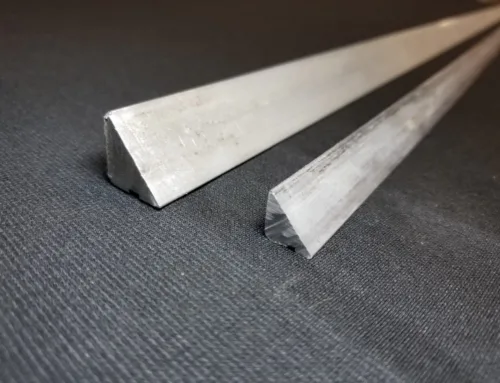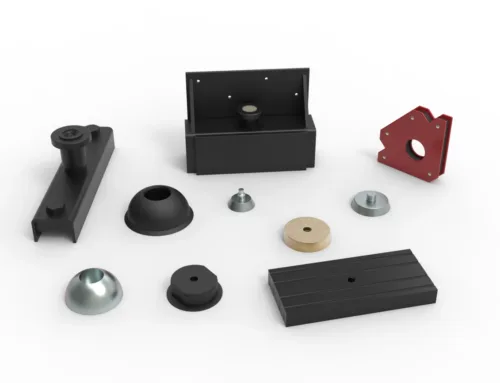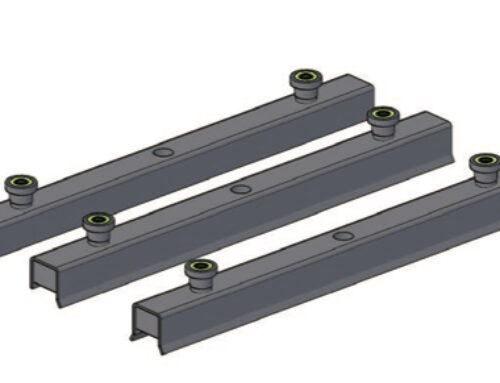Are you curious about what magnet fishing is and why so many people are diving into this unique outdoor hobby? Whether you’re drawn by the thrill of uncovering hidden treasures or the chance to help clean up waterways, magnet fishing offers an exciting and accessible way to explore rivers, lakes, and ponds with just a strong magnet and some basic gear.
In this beginner-friendly guide, we’ll break down everything you need to know—from how magnet fishing works, the essential equipment you’ll need, to the best tips for getting started safely and legally. Plus, you’ll learn how NBAEM supports enthusiasts with high-quality magnetic materials designed specifically for magnet fishing.
Ready to discover the fascinating world beneath the water’s surface? Let’s jump right in!、
What is Magnet Fishing
Magnet fishing is an outdoor hobby that combines elements of treasure hunting, metal detecting, and environmental cleanup. Instead of using a metal detector, you use a strong magnet attached to a rope to pull metal objects out of waterways like rivers, lakes, and canals. People magnet fish for fun, to find valuable or historical items, or to help remove metal waste from the environment.

The idea has been around for decades but became more popular in recent years thanks to social media and outdoor enthusiasts sharing their finds. Historically, magnets were used by boaters and workers to retrieve lost metal tools or equipment from the water. Over time, these practical uses turned into a recreational activity enjoyed by both hobbyists and history buffs.
Magnet fishing works thanks to the science of magnetism. Magnets generate a magnetic field that attracts ferromagnetic materials such as iron, steel, nickel, and cobalt. The strength of the magnet determines how large or heavy an object you can pull from the water. Neodymium magnets are the most common for magnet fishing because they produce a strong pull force despite their compact size, making it possible to recover anything from small nails to heavy bicycles.
Equipment Needed for Magnet Fishing
To get started with magnet fishing, you don’t need a lot of gear, but the right equipment makes all the difference. At a minimum, you’ll want:
- Strong magnet – Usually neodymium, known for high pulling power.
- Durable rope – Thick, braided nylon or paracord works best to handle heavy loads.
- Gloves – Protect your hands from sharp objects and rope burns.
- Retrieval tools – Such as a grappling hook for bigger items that the magnet can’t lift.
Choosing the Right Magnet
The magnet is the heart of the setup. For most beginners, a neodymium magnet with a pulling force of 600–1200 lbs is a solid choice. If you’re after larger finds or fishing in deeper waters, you may need something stronger. Double-sided magnets help when you want to drag across a river or lake bed. Strength is important, but so is durability—coated magnets resist rust and chipping. You can learn more about the different magnet shapes here.
NBAEM Magnetic Material Options
NBAEM offers high-grade neodymium magnets that are ideal for magnet fishing. They’re built with:
- Powerful pull force for lifting heavy or buried metal objects
- Protective coatings to handle water exposure and resist corrosion
- Consistent quality for both hobbyists and advanced users
How to Start Magnet Fishing
Choosing the Right Location
The best spots for magnet fishing are local ponds, rivers, and lakes where people have gathered for years. Bridges, docks, and old ferry crossings are often great finds because metal items tend to collect there. Before you start, check your state and local laws. Some areas require specific permissions, especially if the location is on private property or has historical significance.
Basic Magnet Fishing Steps
- Attach your magnet to a strong rope and tie a secure knot.
- Lower the magnet slowly into the water, letting it reach the bottom.
- Drag or jig the magnet along the bottom to pick up any metal items.
- Pull it in steadily to avoid tangling or losing your finds.
- Remove and store any items safely, keeping sharp or heavy objects away from kids and pets.
Safety Tips and Environmental Responsibility
- Use gloves to protect your hands from rust, sharp edges, and contaminants.
- Wear waterproof boots if you’ll be close to the edge.
- Stay aware of strong currents and slippery surfaces.
- Dispose of unusable scrap metal at a recycling center.
- Avoid disturbing wildlife or water plants.
- If you find potentially dangerous items (like old weapons or explosives), do not touch them—call local authorities.
By picking smart locations, learning the basics, and following safety rules, you can enjoy magnet fishing while helping clean up local waterways.
Common Finds and Rewards of Magnet Fishing
When you throw a strong magnet into the water, you never really know what you’ll pull up — and that’s part of the fun. Most magnet fishing trips turn up metal scrap like nails, bolts, pipes, or rusted tools. These aren’t just junk; they often get recycled, helping clean up waterways.
It’s not unusual to snag lost valuables like keys, knives, fishing gear, or even bicycles. In some cases, magnet fishers have uncovered historical artifacts — old coins, tools, or relics that have been underwater for decades.
Plenty of U.S. magnet fishers share stories of incredible finds:
- An antique revolver in a Michigan river
- A century-old padlock from a Southern harbor
- WWII-era military gear found in a Northeast canal
Apart from the thrill of discovery, magnet fishing offers real environmental benefits. Every piece of metal pulled from a pond, lake, or river is one less hazard for wildlife and one more step toward cleaner water. Over time, local waterways look better and are safer for fishing, swimming, and boating.
Legal and Safety Considerations
Magnet fishing might look simple, but there are some legal and safety rules to keep in mind before you toss a magnet into the water. In the United States, laws on magnet fishing can differ from one state or city to another. Some areas welcome it, while others restrict or ban it—especially in spots with historical or protected status. Always check local regulations and, if needed, get permission from landowners or park authorities before you start.
Common Legal Points to Know
- Public vs. Private Property: Don’t magnet fish on private land without the owner’s okay.
- Protected Waters: Avoid fishing in areas tied to historical sites or wildlife protection zones.
- Permit Requirements: Some states may require special permits, especially if you plan to keep valuable or historical finds.
Safety Measures
Magnet fishing can be surprisingly risky if you’re not prepared. Keep these in mind:
- Wear heavy-duty gloves to protect from sharp or rusty metal.
- Use strong ropes rated for the magnet’s pull force.
- Keep a safe stance near the edge of docks, bridges, or rivers to avoid slipping in.
- Watch out for hazardous objects like old weapons, sharp scrap, or items with chemical residue.
How NBAEM Promotes Safe Use
NBAEM designs and tests magnets to ensure they’re safe to handle while offering strong pulling power. The company focuses on:
- Ergonomic magnet designs for easier, safer retrieval.
- Quality control checks to prevent magnets from chipping or breaking under stress.
- Providing guidance on correct rope attachments, handling tips, and safe storage for magnetic materials.
Advanced Tips for Enthusiasts
If you’ve been magnet fishing for a while and want to step it up, the right gear and techniques make a big difference. Stronger magnets, specialty tools, and better maintenance can help you handle tougher conditions and pull in bigger finds.
Choosing Stronger Magnets and Specialized Gear
For deeper water or heavier targets, upgrade to high-strength rare earth magnets. NBAEM’s premium neodymium magnets are known for superior pulling power, durability, and resistance to corrosion, making them ideal for experienced users.
- Double-sided magnets help snag items from multiple angles.
- Protective casings reduce chipping when hitting rocks or concrete.
- Heavy-duty ropes rated for your magnet’s full strength are a must.
For more on magnetic material quality, check out NBAEM’s guide to rare earth magnets.
Techniques for Challenging Environments
Some environments require different approaches:
- Muddy waters – Use slower, sweeping movements to avoid burying your magnet deeper into silt.
- Urban areas – Expect more debris. Carry a grappling hook for non-magnetic obstructions.
- Strong currents – Shorter rope lengths and higher pull strength help keep control.
Maintenance and Care of Magnetic Materials
Keeping your magnets in top shape extends their lifespan and performance:
- Rinse with fresh water after every trip to remove dirt and prevent rust.
- Dry completely before storage.
- Inspect for chips or cracks—damaged magnets can lose strength.
- Store in a dry, safe place away from electronics and credit cards.
Well-maintained magnets not only perform better but also stay safer to use. For tips on handling and protecting magnets, see NBAEM’s magnets materials overview.
Why Choose NBAEM for Your Magnet Fishing Needs
NBAEM has been working with magnetic materials for years, supplying products trusted by both hobbyists and pros. Their magnets are built for real-world use – strong pull force, long life, and safe handling. For magnet fishing, that means more finds, fewer misses, and gear that holds up.
What Makes NBAEM Magnets Stand Out
| Feature | Why It Matters for Magnet Fishing |
|---|---|
| High Pull Strength | Pulls heavy metal objects from deep water easily |
| Durable Coating | Resists rust and damage from water exposure |
| Safe Design | Smooth edges and secure eyelet to prevent rope slip |
| Consistent Quality | Reliable performance on every trip |
Customer Feedback
Magnet fishers across the U.S. say NBAEM magnets help them get better catches. One Florida hobbyist shared that his NBAEM magnet pulled a full-size bike from a canal in one go. In Ohio, another customer found century-old tools buried in river mud — magnets still worked like new afterward.
How to Get NBAEM Magnets
You can order directly from NBAEM’s sales team or through their U.S. distributors. They offer different sizes and pull strengths to fit beginners and seasoned magnet fishers alike.
Contact NBAEM:
- Email: info@nbaem.com
- Website: nbaem.com





Leave A Comment